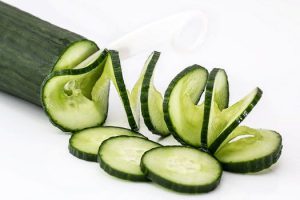General Health Articles
Healthy Living: Snore-free Night's Sleep
Studies show that 30 to 40 percent of the general population snores, which means there are an awful lot of people out there not getting a good night's sleep. Whether you snore, or your partner, there are some easy ways to alleviate snoring and catch some zzzz's before you know it.
 Snore-free Night's Sleep
Snore-free Night's Sleep
Tongue exercises : believe it or not there are exercises that you can do with your tongue that will help “train” your tongue where to stay in your mouth while you are sleeping to prevent snoring. One good tongue exercise to practice is making the “t-t-t-t-t” sound : sort of like you are scolding someone. This strengthens the tip of the tongue. You can also let your tongue hang out relaxed, then tense your tongue by pointing it and holding this position for three seconds.
Buy a mouthpiece : one of the most effective anti-snoring techniques is using a “boil and bite” mouthpiece. These mouthpieces form to your upper and lower teeth and pull your lower jaw and the back of your tongue forward. This process allows your airway to be opened and you to breathe easier.
Nasal sprays : there are quite a few nasal sprays on the market that claim to help curb snoring, so it may have to be a trial and error process in finding one that works for you. Some studies say that eliminating yeast overgrowth in your nostrils may reduce inflammation and nasal congestion, but it also causes snoring.
Sleep with a tennis ball : say what? Hear us out on this one, because most people snore while sleeping on their back if you provide a barrier between your body and your back while you are sleeping you will be less likely to sleep on your back throughout the night, thereby reducing your snoring. Some people suggest putting a tennis ball in a pocket T-shirt then sleeping with the T-shirt on backwards. You can also put the tennis ball in a fanny pack and then wear that backwards. If you happen to turn onto your back during the night, the ball, whether it is in your shirt or in your fanny pack, will cause discomfort and you will roll onto your side.
Back to School 101: When to Keep Your Child Home
Now that school is back in session and children are more susceptible to colds and the flu, many parents wonder whether it is safe to send their child to school or not. While many schools have specific guidelines regarding sick children, the following points are a general rule of thumb that will help you determine whether it is safe or not for your child and others. Your child will need to stay home if:

- They have a fever higher than 100.4 degrees Fahrenheit
- They are vomiting
- They have diarrhea
- They are in the first 24 hours of pink eye or strep throat antibiotics
Generally, children can return to school when they have no fever, they can eat and drink normally, they are well rested and alert enough to pay attention in class and once they have completed any doctor-recommended isolation due to pink eye or strep throat.
Food for Thought: Understanding Lactose Intolerance
If you are lactose intolerant or if you know someone who is, here are some things that will help you to learn more about this condition:
 Understanding Lactose Intolerance
Understanding Lactose Intolerance
- Our bodies produce an enzyme called lactase and when you drink a glass of milk or eat cheese, lactase helps to break down the milk sugar, or lactose, into simpler sugars that are eventually absorbed into your bloodstream. People that are lactose intolerant have a lactase deficiency.
- Many other illnesses have symptoms very comparable to lactose intolerance. It's best to check with your doctor regarding your symptoms and he/she may suggest that you cut out dairy and denote any changes. A breath test or tests of your stool can determine whether you are lactose intolerant.
- Undigested lactose can cause a variety of gastrointestinal symptoms, typically within two hours of having a dairy product, including nausea, bloating, abdominal pain, flatulence and diarrhea. Although some people may have a lactase deficiency and have none of these symptoms at all.
- While a few babies are born with a lactase deficiency, most people become lactose intolerant from age 2 to 12. And even though most people become lactose intolerant during their childhood, they typically do not show signs of the intolerance until late adolescence or early adulthood.
- Almost 65% of people worldwide or nearly 30 million Americans suffer from some degree of lactose intolerance. It is more common among Asians, Africans, Hispanics, or Native Americans and less likely if your ancestors are from northern or western Europe.
- Lactose intolerance is not the same thing as a milk allergy. If you are allergic to milk, then your body is fighting dairy as if it were a harmful intruder in your body. Symptoms are far more severe than lactose intolerance and may include itchy eyes, rash and wheezing. People who are allergic to milk must avoid it entirely.
- People with lactose intolerance can consume some amounts of dairy without any symptoms. Most people can drink up to a half-cup of milk without it affecting them at all.
In the News: Myth vs. Fact- Hair Loss
The statistics can be staggering, more than 50 percent of men over the age of 50 are experiencing some form of hair loss, making the hair loss industry worth more than 3.5 billion dollars.
And while many of the creams or treatments that are currently out there for hair loss that don't work, it is hard to determine what is a fact and what is a myth when it comes to hair loss.
 Hair Loss - Myths and Facts
Hair Loss - Myths and Facts
MYTH: Hair restoration never looks natural. There are plenty of great hair restoration techniques out there, compared to years ago when the hair restoration process was more noticeable than present day.
MYTH: Baldness comes from your Mother's side. Your “hair future” is determined from both sides of your family and you are more likely to have a mix of your parent's hair genes.
MYTH: Pull out a grey hair and three more will grow in its place. Repeatedly pulling out hairs can cause traction alopecia, where the trauma of plucking hairs can scar the hair follicle to the degree where it will no longer produce hair. So, pulling them out on a regular basis can make your hair go away for good.
FACT: Mistreating your hair can cause hair loss. Overworking your hair can damage your hair, make it weak and break easily. Hair troubles can be caused by aggressive brushing, back combing, dying and straightening. Shampoos and even too much UV exposure can also damage hair.
FACT: Propecia works. Most of the hair loss falls into the category of male-pattern baldness. This inherited condition makes a man's hair follicles stop producing hair in reaction to hormone dihydrotestosterone (DHT). Propecia blocks an enzyme that would otherwise turn testosterone to DHT, although it must be taken every day and may take up to three months to see any noticeable changes.
Prevention 101: Soothe Your Sunburn1
Let's face it, no matter how lathered up you are or how cautious you are this summer, at some point you may slip up and end up with a pretty nasty (and painful) sunburn. Here are some easy ways for you to soothe the painful effects of sunburn:
 Sunburn treatments
Sunburn treatments
- Take some aspirin to reduce redness and ease some pain.
- Cortisone creams, if applied within 6 hours of the burn, provide some relief.
- Pure aloe Vera gel can help cool down your skin and relieve discomfort.
- Avoid additional sun exposure while your skin heals.
- Chill and blend cucumber slices to create a cucumber paste to apply to your burned skin.
- Apply an ice compress, but not directly to the burned area to help constrict your skin's capillaries.

